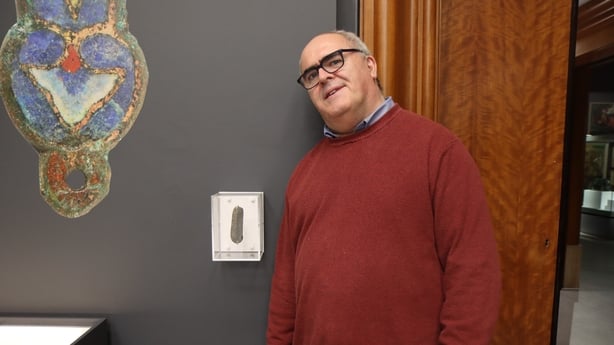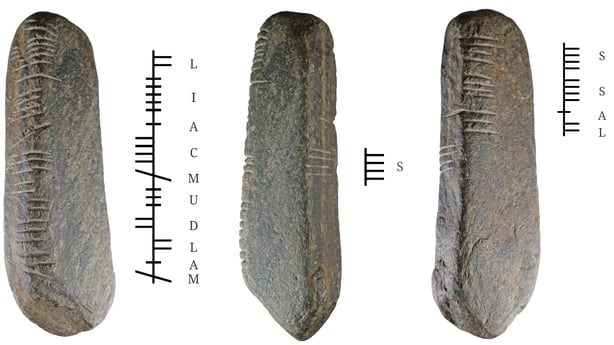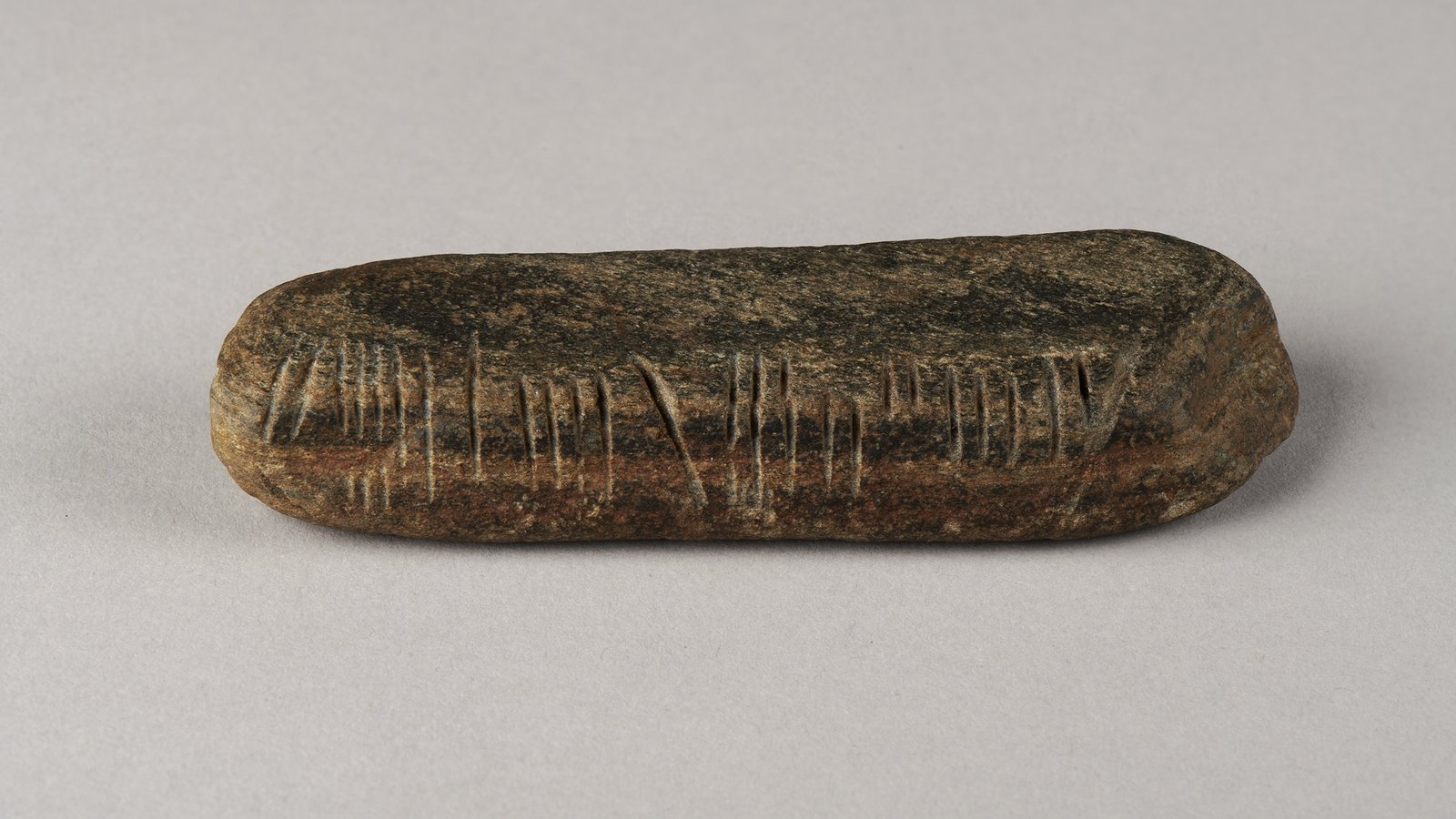The discovery of a 1,600-year-old Ogham stone in England has been described as an “absolutely amazing” find by an archaeologist.
The rectangular sandstone rock was found by accident in Coventry in the garden of geography teacher, Graham Senior.
Finds liaison officer for the Birmingham Museums Trust, Teresa Gilmore, told RTÉ’s Morning Ireland that the discovery on an Ogham stone in the English midlands was a rare find.
“These finds do not turn up in the midlands. The bulk of Ogham inscriptions are found over in Ireland,” she said.
Mr Senior came upon the stone while he was gardening in May 2020 during the Covid-19 pandemic lockdown.
The stone is 11cm in length and appeared to have several horizontal incisions along its side.
“It caught my eye as I was clearing an overgrown part of the garden. At first, I thought it was some kind of calendar,” he said.
Mr Senior shared his discovery with the UK’s Portable Antiquities Scheme who confirmed that the stone was inscribed with Ogham, an early Irish language dating back over 1,600 years.
“Finding out later it was an Ogham stone and over 1,600 years old was incredible,” Mr Senior added.
Ms Gilmore said the discovery is probably related to Irish trade and transport in the area during the 5th and 6th centuries.

“The script is that of an early style, most likely 5th to 6th century but possibly as early as 4th century.”
She added that it is unknown where in Ireland the stone came from, but the first part of the inscription is someone’s name, and the second part may relate to a location or occupation.
“The inscription reads: MALDUMCAIL / S / LASS. The first part of the inscription relates to a person’s name: Mael Dumcail. The second part is less certain,” Ms Gilmore said.
We need your consent to load this rte-player contentWe use rte-player to manage extra content that can set cookies on your device and collect data about your activity. Please review their details and accept them to load the content.Manage Preferences
“As to why the object was deposited in Coventry and what it originally functioned as, are still research questions to be answered,” she added.
Ogham was an alphabet used in the early medieval period primarily for writing in the early Irish language.
Before people in Ireland at the time began using manuscripts made from vellum, they used the Ogham to inscribe materials such as stone.

Ogham is highly unusual among world writing systems, consisting solely of parallel lines in groups of 1-5. The stones provide insight into the Irish language before the use of the Latin insular script.
Over 400 known Ogham stones and fragments have survived, found predominantly in Ireland and on the Welsh coast.
Ms Gilmore urged anyone who finds something they believe might be of archaeological value to contact their local museum.
The stone is to be displayed to the public for the first time at an exhibition at the Herbert Art Gallery and Museum in Coventry until April 2025

